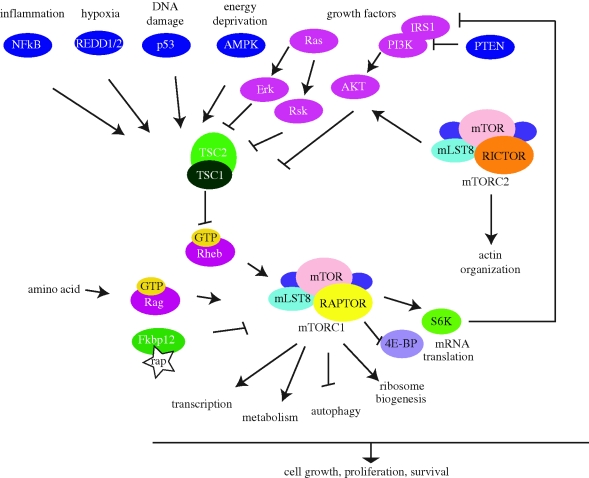Figure 1.
mTOR signalling pathway. mTOR signalling pathways integrate environmental cues to regulate cellular growth in mammalian cells. The mTOR protein kinase is the core factor of two protein complexes, mTORC1 and mTORC2. Rapamycin-sensitive mTORC1 is responsive to nutrients and stress, and mediates diverse activities in the regulation of cellular homeostasis and growth. The GTP-bound form of the small G protein Rheb stimulates the activity of mTORC1. In turn, Rheb is regulated by the heterodimer of the tuberous sclerosis proteins TSC1 and TSC2. TSC1/2 negatively regulates mTORC1 activity by converting Rheb into an inactive GDP-bound state. Growth factors promote several kinase activities such as Akt, Erk and Rsk, which phosphorylate TSC1/2 and inhibit its activities, thereby inducing the mTORC1 signalling pathway. On the other hand, stress such as hypoxia, energy deprivation, DNA damage and inflammation activate TSC1/2 and repress mTORC1 signalling. Amino-acid activation of mTORC1 is regulated by the Rag GTPase and is independent of TSC1/2. Rapamycin-insensitive mTORC2 controls actin organization, which is essential for cell shape determination. mTORC2 is also activated by growth factors but the detailed mechanism is unclear. Arrows indicate activation, whereas bars indicate repression.

